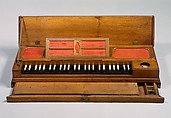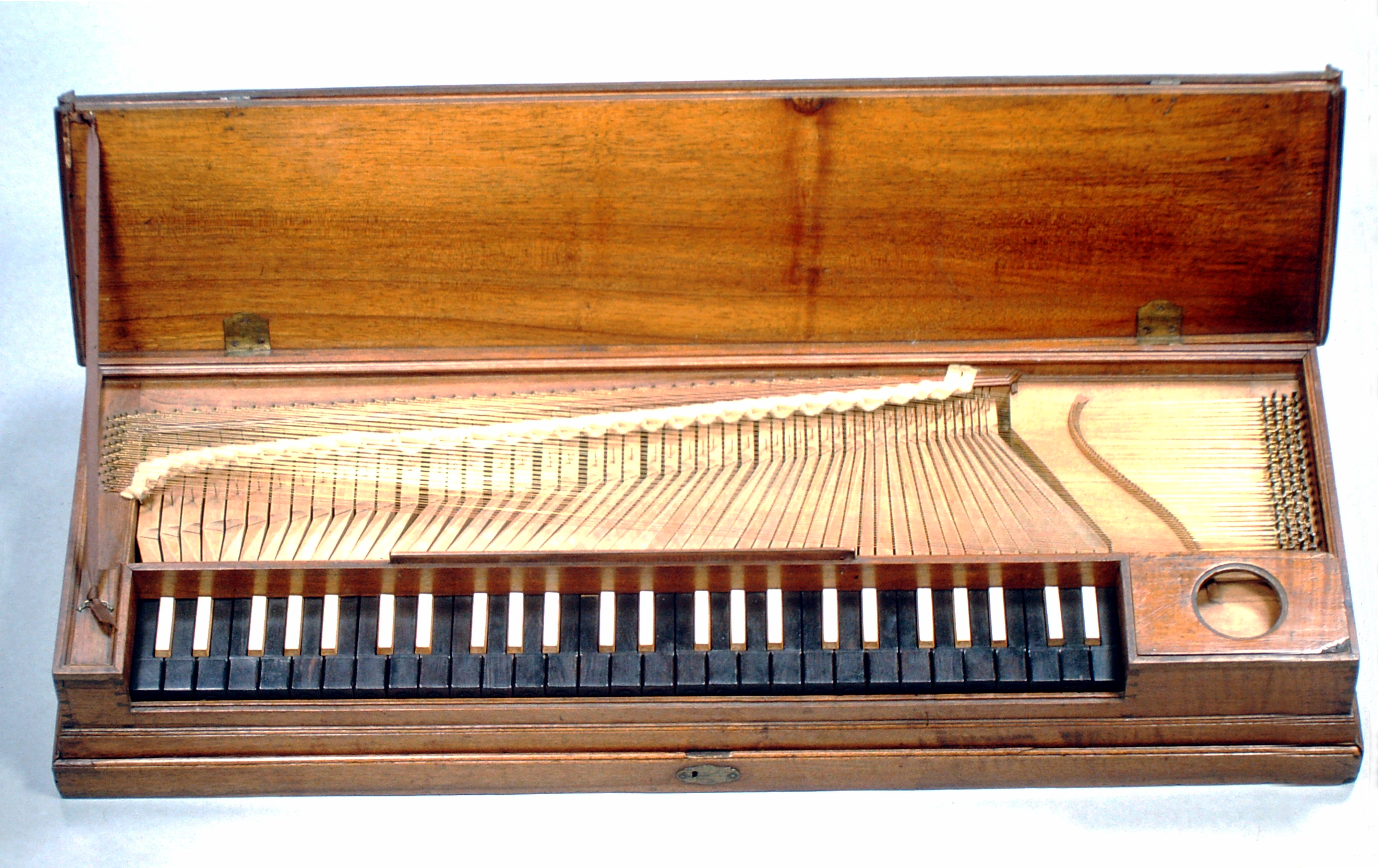Clavichord
School of Johann Heinrich Gräbner German
Not on view
Clavichords were built as far back as the early fifteenth century, and perhaps earlier. This most personal, simplest, and quietest of European keyboard instruments was the perfect vehicle for music pedagogy, keyboard practice, and composition throughout its 400-year history. The action of the clavichord is relatively simple: the finger depresses a key which, working as a lever, causes its opposite end to rise so that a metal tongue (or tangent) hits a metal string, causing it to resonate. When the key is released, the string is damped. The clavichord is very quiet compared to the harpsichord or piano because of the inefficiency of its sound production, with the tangent hitting the string at the end of its resonating length, rather than in the middle. The tangent mechanism, however, allows a player to achieve a range, albeit narrow, of louder and softer tones as well as special effects like bebung, a form of vibrato, so that the clavichord was and is valued for its intimate expressiveness. Earlier clavichords were fretted, that is, a single string might be used to create several different notes, depending on where a tangent struck it. Unfretted clavichords, with a single note per string, came into use in the late seventeenth century.
Technical description: Fretted clavichord, European walnut case without legs, drawer extending full width under bottom has leather-hinged lid opening to reveal compartments for paper, ink bottles, etc., with remnants of marbled paper lining, lid support ribbon secured to sliding lid of compartment left of keyboard, fabric-backed music rack hinged into dust panel over strings, separate small panel with large central hole covers front C-e soundboard area, nameboard includes recessed panel that springs up to form music rest at front of rack, C-e³ double-strung, triple-scored ebony naturals with arcade fronts (note letters scratched on heads), pear accidentals topped with ivory, typically carved and lead-weighted basswood key levers numbered beneath, tuning pins identified by inked letters on paper strip, original rack pins and tangents of brass (some pins replaced), brass hardware, fretting in pairs except for Ds and As and bottom octave. (Laurence Libin, 1985)
Due to rights restrictions, this image cannot be enlarged, viewed at full screen, or downloaded.
This artwork is meant to be viewed from right to left. Scroll left to view more.



